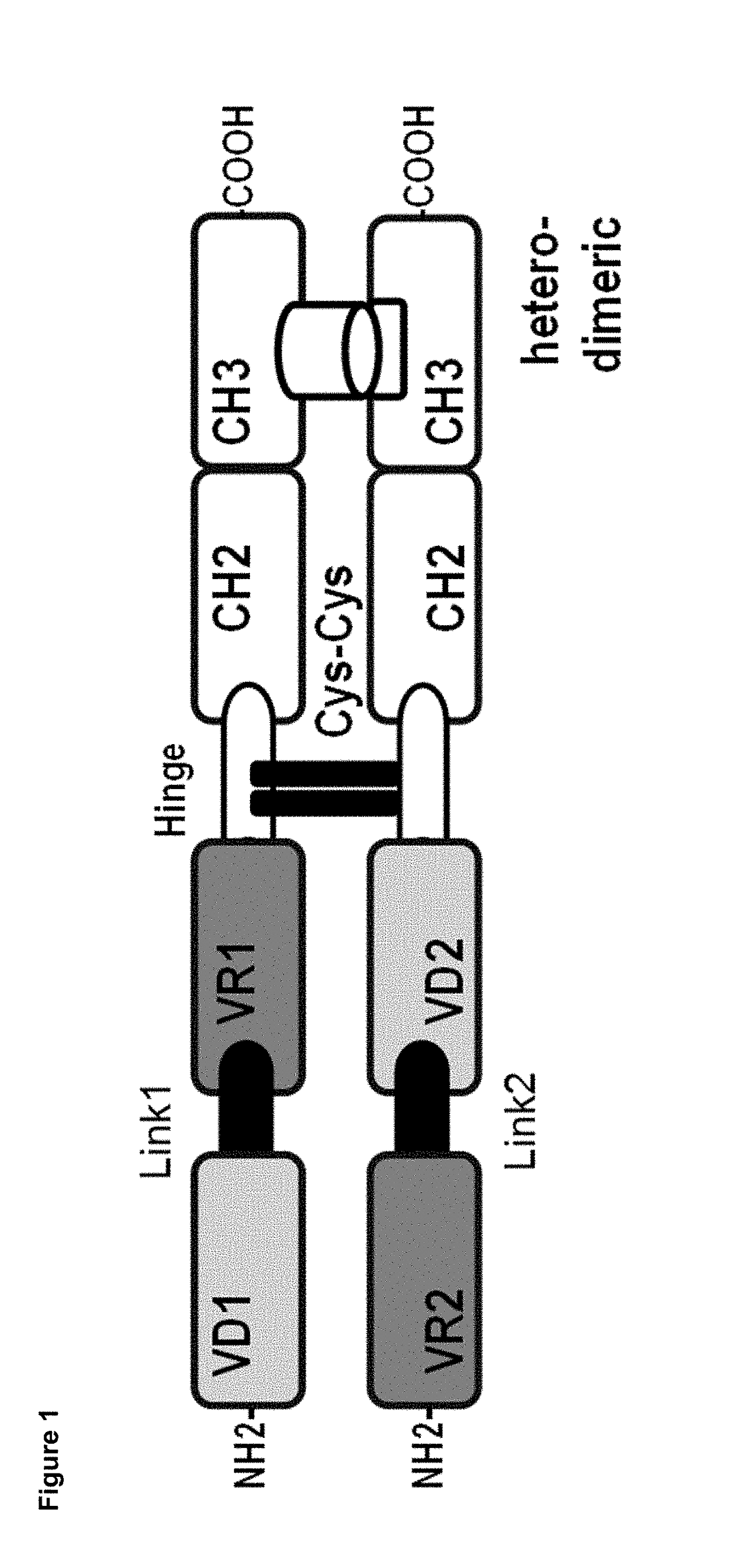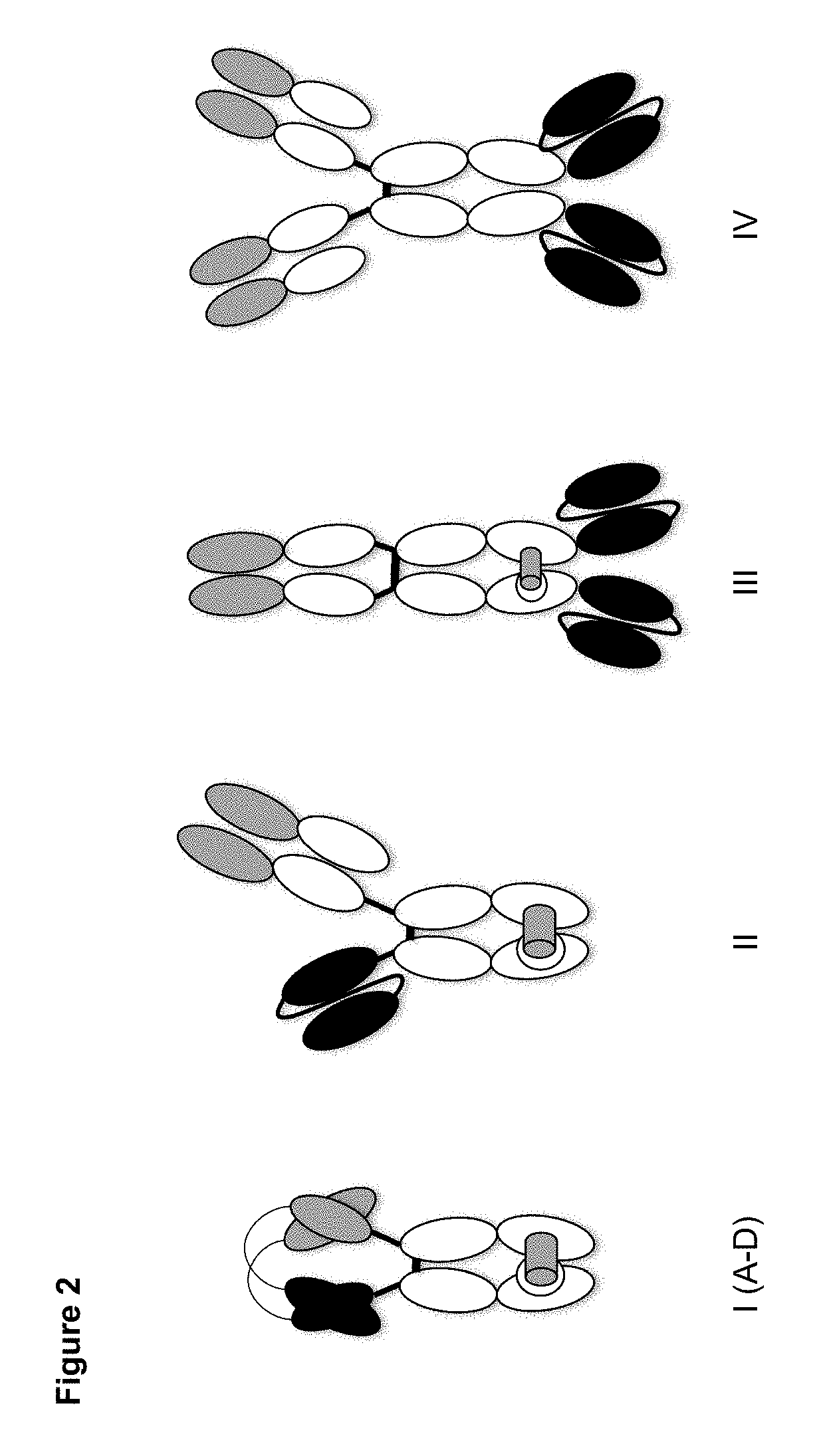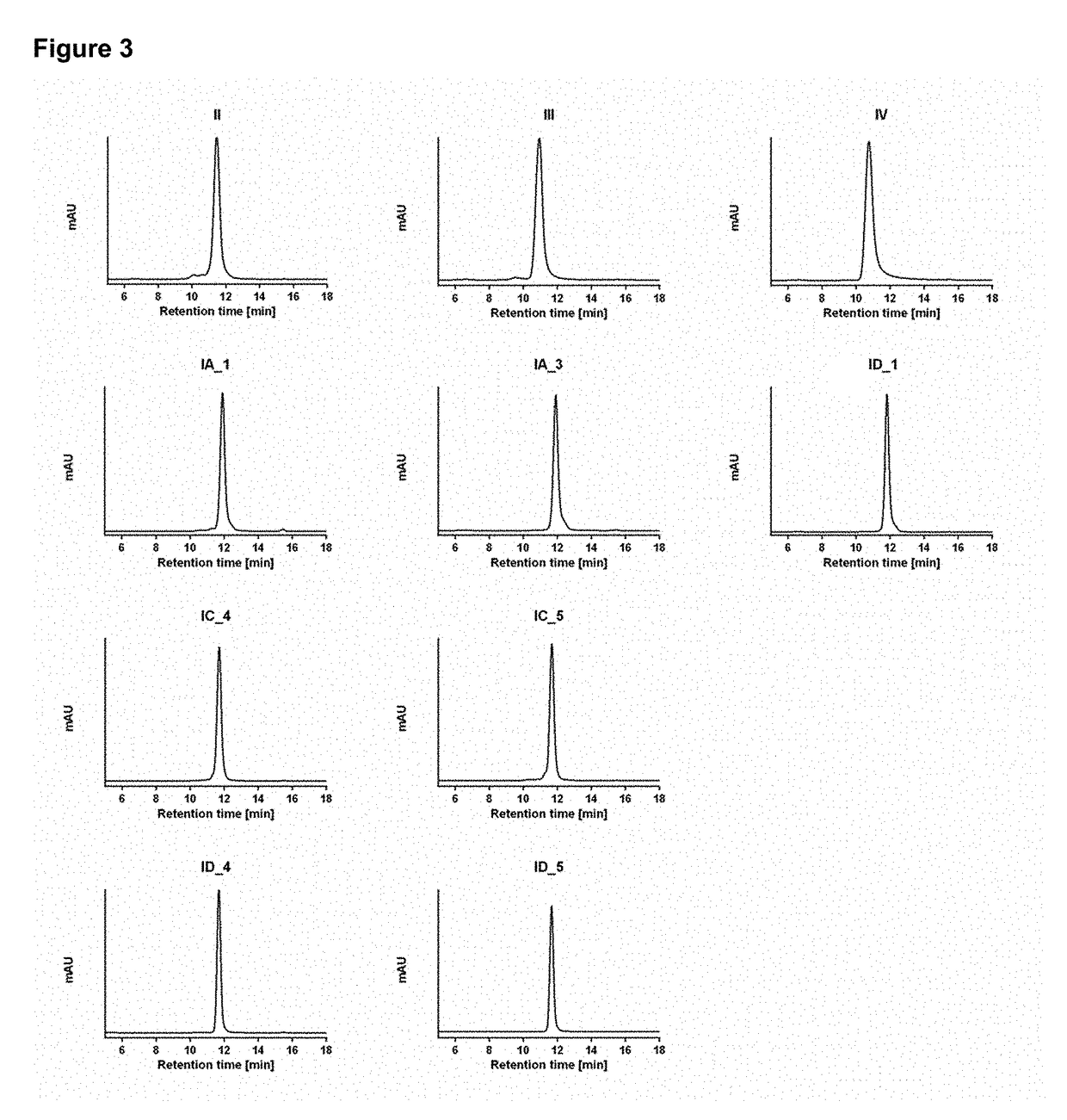Dual specificity polypeptide molecule
a polypeptide molecule and dual specificity technology, applied in the field of bispecific polypeptide molecules, can solve the problems of difficult purification processes, poor production yields, target cell lysis, etc., and achieve the effects of improving heterodimerization, facilitating construction, and facilitating heterodimerization
- Summary
- Abstract
- Description
- Claims
- Application Information
AI Technical Summary
Benefits of technology
Problems solved by technology
Method used
Image
Examples
example 1
Design of Fc-Containing Bispecific TCR / mAb Diabodies and Control Molecules.
[0138]Fc-containing bispecific TCR / mAb diabodies and control molecules (as depicted in FIG. 2) were designed to specifically bind to the human TCR-CD3 complex and to the peptide:MHC complex comprising the HIV-derived peptide SLYNTVATL (SEQ ID No. 7) bound to HLA-A2*01. For targeting TCR-CD3 complex, VH and VL domains derived from the CD3-specific, humanized antibody hUCHT1(V9) described by Zhu et al. (Identification of heavy chain residues in a humanized anti-CD3 antibody important for efficient antigen binding and T cell activation. J Immunol, 1995, 155, 1903-1910) or VH and VL domains derived from the alpha / beta TCR-specific antibody BMA031 described in Shearman et al. (Construction, expression and characterization of humanized antibodies directed against the human alpha / beta T cell receptor. J Immunol, 1991, 147, 4366-73) and employed in the humanized version variant 10 (data generated in-house) were used....
example 2
Production and Purification of Fc-Containing Bispecific TCR / mAb Diabodies
[0141]Vectors for the expression of recombinant proteins were designed as mono-cistronic, controlled by HCMV-derived promoter elements, pUC19-derivatives. Plasmid DNA was amplified in E. coli according to standard culture methods and subsequently purified using commercial-available kits (Macherey & Nagel). Purified plasmid DNA was used for transient transfection of CHO-S cells according to instructions of the manufacturer (ExpiCHO™ system; Thermo Fisher Scientific). Transfected CHO-cells were cultured for 6-14 days at 32° C. to 37° C. and received one to two feeds of ExpiCHO™ Feed solution.
[0142]Conditioned cell supernatant was harvested by centrifugation (4000×g; 30 minutes) and cleared by filtration (0.22 μm). Bispecific molecules were purified using an Äkta Pure 25 L FPLC system (GE Lifesciences) equipped to perform affinity and size-exclusion chromatography in line. Affinity chromatography was performed on ...
example 3
Specific and Target Cell-Dependent T Cell Activation Induced by Fc-Containing TCR / mAb Diabodies
[0145]The potency of Fc-containing TCR / mAb diabodies with respect to T cell activation was assessed using the T Cell Activation Bioassay (Promega). The assay consists of a genetically engineered Jurkat cell line that expresses a luciferase reporter driven by an NFAT-response element (NFAT-RE). Assays were performed according to the manufacturer. Briefly, T2 cells either loaded with the HIV-specific peptide SLYNTVATL (SEQ ID No. 7) or left without peptide loading (unloaded control) were subsequently co-cultured with Promega's modified Jurkat cells in presence of increasing concentrations of bispecific TCR / mAb molecules. Jurkat reporter T cell activation was analyzed after 16-20 hours by measuring luminescence intensity.
[0146]Representative potency assay results are depicted for IgG4-based (FIG. 4) and IgG1-based bispecific TCR / mAb molecules (FIG. 5), respectively. The data indicate that reg...
PUM
| Property | Measurement | Unit |
|---|---|---|
| molecular weight | aaaaa | aaaaa |
| concentration | aaaaa | aaaaa |
| pH | aaaaa | aaaaa |
Abstract
Description
Claims
Application Information
 Login to View More
Login to View More - R&D
- Intellectual Property
- Life Sciences
- Materials
- Tech Scout
- Unparalleled Data Quality
- Higher Quality Content
- 60% Fewer Hallucinations
Browse by: Latest US Patents, China's latest patents, Technical Efficacy Thesaurus, Application Domain, Technology Topic, Popular Technical Reports.
© 2025 PatSnap. All rights reserved.Legal|Privacy policy|Modern Slavery Act Transparency Statement|Sitemap|About US| Contact US: help@patsnap.com



